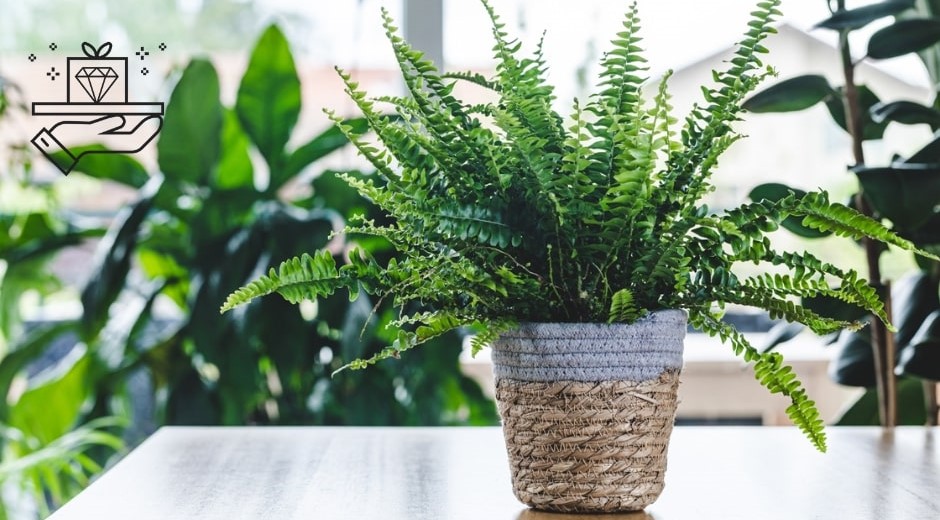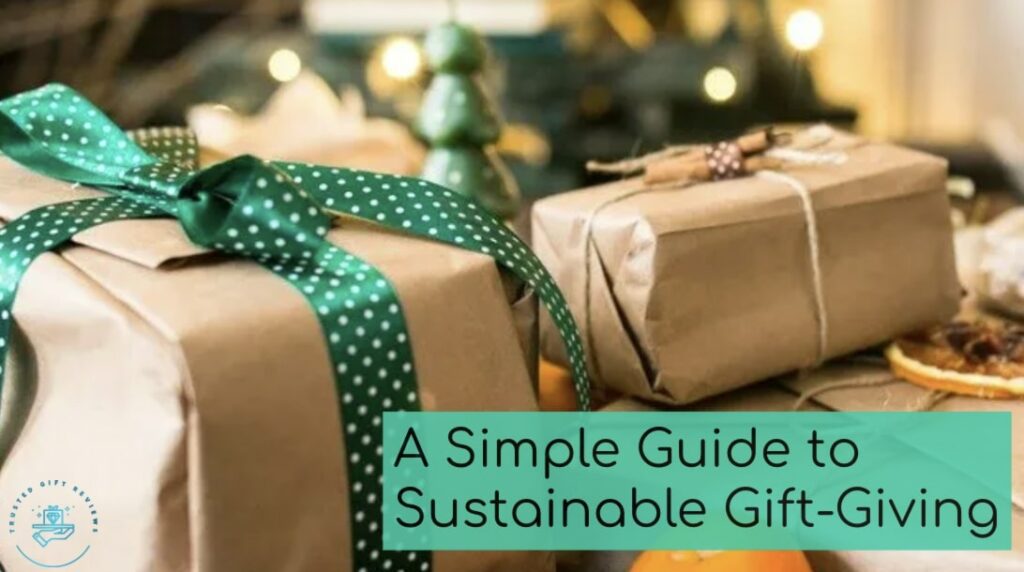Indoor ferns are living pieces of art that elevate the atmosphere of indoor spaces with their lush and cascading fronds. These compact and vibrant plants are the perfect green companions that add a touch of tranquility and elegance to your surroundings.
In this guide, we’ll explore stunning types of indoor ferns and provide you with tips on how to care for, propagate, and use them to beautify your home.
Whether you’re a beginner or a seasoned plant enthusiast, there’s an indoor fern to suit your preferences!
Why choose indoor ferns?


Here are several reasons that make indoor ferns an outstanding choice for your home:
- Low Maintenance and Adaptability: Indoor ferns are known for their low-maintenance nature, which makes them the perfect companions for both novice and experienced plant enthusiasts.
They thrive in indoor environments with ease and are well-suited to indirect light. This makes them an excellent choice for spaces with limited sunlight.
- Air Purifiers: In 1989, the NASA Clean Air Study tested the capacity of indoor plants to eliminate various harmful air contaminants typically present indoors.
This research revealed that certain indoor plants, including ferns, exhibited remarkable efficiency in purifying indoor air.
For example, Boston ferns demonstrated their effectiveness in reducing a range of indoor air pollutants, including formaldehyde, xylene, and toluene.
Types of Indoor Ferns
Boston Fern


Botanical Name: Nephrolepis exaltata
Origin: Central and South America
Size: Typically grows 1 to 3 feet
Light: Moderate to bright, indirect light
Water: Once a week or when the top layer of the soil is dry
Toxicity: Non-toxic
Boston ferns are popular houseplants due to their compact and beautiful appearance, typically reaching heights of one to three feet.
They are hardy, evergreen perennials known for their textured fronds. These ferns are easy to care for, which makes them an excellent choice for gardening beginners.
Boston ferns have vibrant green, lengthy, gracefully arching fronds, composed of numerous leaflets that contribute to their lush and bushy appearance.
They love environments that provide bright indirect light, though they can also tolerate some shade. They also thrive in humid conditions, so consider misting them regularly or placing them in high-humidity locations like bathrooms.
Boston ferns don’t need much fertilizer. Just feed them once a month or even less in the summer.
Maidenhair Fern


Botanical Name: Adiantum
Origin: South America
Size: Typically 1 to 3 feet
Light: Bright, indirect light
Water: Every day or every 2 days
Toxicity: Non-toxic
Maidenhair ferns are known for their graceful and delicate appearance. Their fronds are composed of small, fan-like leaflets that lend an elegant and ornamental touch to any space.
They demand attention and precision, which makes them a challenging choice for plant owners. These ferns thrive in bright, indirect light and should be shielded from both direct sunlight and dimly lit conditions.
Water maidenhair ferns enough to keep the soil consistently moist, but avoid leaving their environment excessively soggy. They are sensitive to drought and can quickly show signs of stress if not adequately hydrated.
Despite being challenging to look after, maidenhair ferns are in demand among homeowners for their ornamental value.
Their sheer beauty and intricate foliage make them a rewarding choice for those willing to invest the time and attention they require.
Best for: Maidenhair ferns are best for experienced plant enthusiasts since caring for these ferns can be too stressful for beginners.
Bird’s Nest Fern


Botanical Name: Asplenium nidus
Origin: Southeast Asia, Australia, Hawaii, and East Africa
Size: Can grow up to 2 feet
Light: Medium to bright light conditions
Water: Needs regular watering once a week, and allow the soil to dry before watering again
Toxicity: Non-toxic
Asplenium nidus, more commonly known as the bird’s nest fern, is easily recognizable by its bright green fronds that have a glossy and leathery texture. This type of fern can also be found growing on palm trees.
It has charming wavy and crinkled edges, which makes it look like a bird’s nest.
It’s a space-efficient choice for indoor settings since it has a compact size that typically reaches a mature height of only 2 feet.
While not the most demanding, bird’s nest ferns require some attention. They thrive in loose, fast-draining, and slightly acidic soil and need medium to bright indirect light.
Best for: Birds nest ferns are an ideal gift for colleagues, family, and friends who have recently achieved new milestones in life, as they symbolize prosperity.
Kimberly Queen Fern


Botanical Name: Nephrolepis obliterata
Origin: Australia
Size: Typically reaches 2–3 feet in height
Light: Bright, indirect light
Water: Once a week. Ensure that the soil has dried out between each watering
Toxicity: Non-toxic
Kimberly queen ferns have an eye-catching appearance with their glossy, leathery dark green fronds that grow upright. They thrive in bright, indirect light and prefer temperatures ranging from 60°F to 75°F.
They can be sensitive to both underwatering and overwatering. Consistent watering is important but make sure that the soil has dried out between watering sessions.
While Kimberly queen ferns are relatively manageable to grow, they are susceptible to common pests like aphids, fungus gnats, and spider mites.
Best for: Kimberly queen ferns are best for individuals who have some experience in growing plants and are residing in homes with bright, indirect sunlight exposure.
Staghorn Fern


Botanical Name: Platycerium
Origin: Africa, Southeast Asia, and Australia
Size: Typically 2 to 3 feet in height
Light: Medium to bright, indirect light
Water: Once a week or when the top of the soil has dried out
Toxicity: Non-toxic
Staghorn ferns’ most notable feature is their fronds, which look like the branching horns of a stag, hence the name “staghorn.” These fronds typically sport a dark green coloration with delicate white hairs that absorb moisture efficiently.
Classified as epiphytic plants, staghorn ferns grow by attaching themselves to other plants or objects. This is why they’re commonly grown on plaques rather than within traditional pots.
While they are not considered overly challenging to grow, they do require a higher level of care. They demand consistent monitoring of light exposure, temperature, and moisture levels.
These ferns thrive in medium to bright indirect light and prefer temperatures ranging from 55°F to 85°F. It’s advisable to avoid placing them in areas prone to cool drafts.
Best for: Staghorn ferns are best gifts for friends or acquaintances who have recently moved into a new home.
A staghorn fern mounted on a wooden plaque serves as both a decorative accent for their walls and a symbol of life and growth in their new living space.
Rabbit’s Foot Fern


Botanical Name: Davallia fejeensis
Origin: Fiji
Size: Typically 1 to 2 feet
Light: Bright, indirect light
Water: Once a week or when the top of the soil has dried out
Toxicity: Non-toxic
The rabbit’s foot fern is named for its furry, creeping rhizomes that look like a rabbit’s foot. The fronds of this type of fern are finely dissected and range from light to dark green.
Its rhizomes have soft, brownish hairs that gracefully extend across the soil’s surface and the fern’s pot or basket. These furry rhizomes contribute to the fern’s unique and appealing look.
The rabbit’s foot ferns thrive in environments with bright indirect light. This makes them well-suited for growth in hanging baskets placed near windows to maximize their exposure to light.
Best for: Rabbit’s food ferns are an ideal gift for friends and family who appreciate unique-looking plants.
Lemon Button Fern


Botanical Name: Nephrolepis cordifolia
Origin: Asia, Australia, and Hawaii
Size: Typically up to 1 foot in height when grown indoors
Light: Lower light conditions to bright, indirect light
Water: Once a week
Toxicity: Non-toxic
Nephrolepis cordifolia, commonly known as lemon button ferns, are known for their distinctive yellow-green fronds that look like slender swords.
These fronds bear small, round leaflets resembling buttons that grow in clusters and create a lush and compact visual appeal.
Lemon button ferns emit a subtle citrus scent during their active growth period. This ability helps mask unpleasant odors indoors and infuse your space with a clean and refreshing atmosphere.
Lemon button ferns are remarkably low-maintenance and beginner-friendly. They can tolerate drought and can adapt to a range of lighting conditions, spanning from bright, indirect light to lower light settings.
Best for: Lemon button ferns are the best gift for individuals who would like to have a pleasant citrus scent for a refreshing ambiance in their home.
Holly Fern


Botanical Name: Cyrtomium falcatum
Origin: Eastern Asia
Size: Typically reaches up to 2 feet in height
Light: Thrives full shade to bright, indirect light but can tolerate lower light conditions in a short period
Water: Water regularly whenever the top layer of the soil becomes dry
Toxicity: Non-toxic
Cyrtomium falcatum, commonly known as holly fern, has elongated leaves composed of six to ten pairs of shiny, vibrant green leaflets. These leaflets feature flat to wavy margins with slight serrations and a network of veins that form an intricate pattern.
The undersides of these leaflets have small structures that contain spores, concealed beneath brown or black protective coverings.
Holly ferns are versatile when it comes to lighting requirements; they flourish in anything from full shade to bright, indirect light. They benefit from regular watering whenever the topsoil feels dry to the touch.
Best for: Holly ferns are best for plant enthusiasts seeking a unique and adaptable plant to add to their collection.
Button Fern


Botanical Name: Pellaea rotundifolia
Origin: New Zealand
Size: Typically up to 1 to 2 feet in height
Light: Bright, indirect light
Water: Small amounts of water every 2 days
Toxicity: Non-toxic
Button ferns look similar to lemon button ferns, but they typically have a richer shade of green. They feature lengthy fronds composed of small, rounded leaflets resembling buttons.
Their growth pattern often forms a rosette-like arrangement that gives them a bushier appearance compared to lemon button ferns.
When grown indoors, these plants can reach a height of up to 2 feet, which makes them an excellent choice for tabletops and window sills.
Best for: Button ferns are best for individuals who prefer to have unique-looking ferns with a deeper color in their home.
Japanese Painted Fern


Botanical Name: Athyrium niponicum
Origin: Japan and Eastern Asia
Size: Up to 1 to 3 feet in height
Light: Shaded or medium, indirect light
Water: Water adequately to keep the soil consistently moist
Toxicity: Non-toxic
The Japanese painted fern, scientifically known as Athyrium niponicum, is an eye-catching fern variety with vivid coloration.
This fern is named as such because of its silver-hued fronds and strikingly dark red stems, which make it an appealing choice for indoor cultivation.
The Japanese painted fern thrives in environments sheltered from direct sunlight. It flourishes best in shaded areas or under medium indirect light.
Best for: The Japanese painted fern is ideal for plant enthusiasts seeking an eye-catching and distinctive fern species to decorate their indoor spaces.




